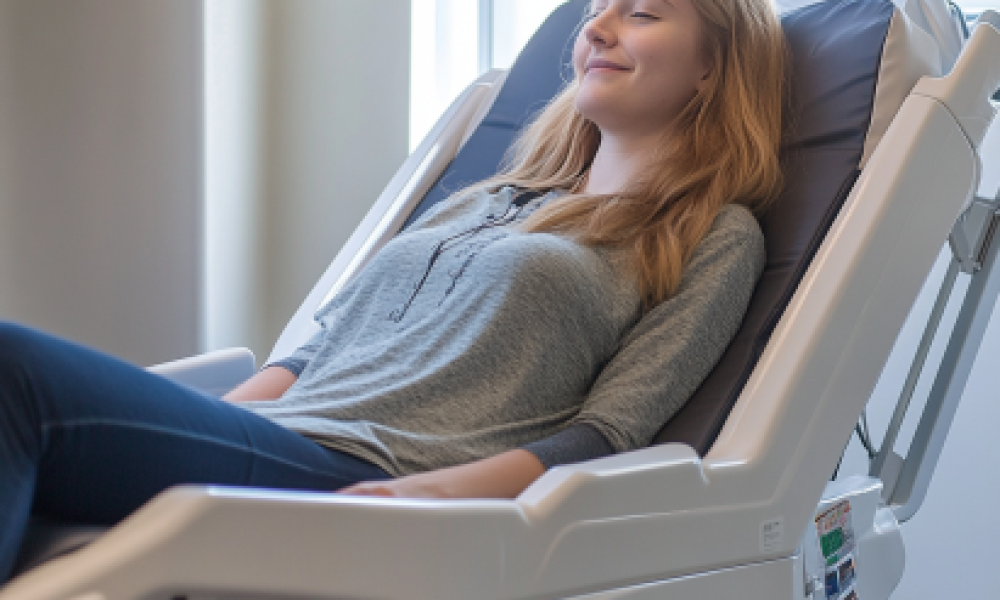Does IBT Really Work? Science & Success Stories
Does IBT really work? Inclined Bed Therapy (IBT) raises the head of your bed 6–8 inches so gravity can assist circulation, breathing, and digestion—without drugs or gadgets.
Key Takeaways
- IBT basics: Elevate the head of your bed by 6–8 inches to promote circulation and alignment.
- Evidence snapshot: Research supports inclines for reflux; many users report less snoring and back discomfort.
- Real outcomes: Success stories cite improvements in chronic pain, digestion, and sleep quality.
- Compare options: IBT is a low-cost, drug-free complement to CPAP, wedges, and adjustable frames.
- Bottom line: For many people, does IBT really work? Early benefits often appear within weeks.
Understanding Inclined Bed Therapy (IBT)
Does IBT really work? It depends on your goals and health profile, but the method is straightforward: raise the bed’s head by 6–8 inches (about a 5–7° tilt) so gravity can assist your body’s natural processes during sleep.
Unlike flat sleeping, IBT creates a gentle gradient that may reduce pressure on organs, support venous return, and keep airways a touch more open. For a practical primer, see our sleeping on an incline guide.
Scientific Evidence Supporting IBT
So—does IBT really work according to current evidence? Here’s what research and expert guidance say about an inclined sleep posture across key areas:
- Acid reflux & GERD: Elevating the head of the bed is commonly recommended to reduce reflux. See the Sleep Foundation.
- Circulation & edema: Gravity-assisted blood flow can reduce swelling. See research at NCBI.
- Upper airway patency: Mild apnea and snoring may improve with gentle incline. See NIH.
- Spinal comfort: Tilt redistributes pressure. Many report fewer aches when paired with a supportive mattress. See IBT benefits.
- Brain “cleaning”: Some suggest incline supports glymphatic flow, though evidence is evolving.
Real-Life Success Stories
While results vary, many sleepers share consistent themes after a few weeks of IBT:
- Mark — chronic back relief: Lumbar tightness eased with IBT plus supportive mattress.
- Lisa — reflux breakthrough: Elevation cut heartburn and reduced late-night meds.
- David — lighter legs: Less swelling from varicose heaviness.
- Emily — better breathing: CPAP plus IBT improved sleep depth and reduced wake-ups.
Want structured tips? Explore Best Beds for Inclined Bed Therapy.
Comparing IBT to Other Sleep Solutions
If you’re weighing options and asking, does IBT really work compared to wedges or adjustable frames?
- Flat beds: No gravity assist; reflux may worsen.
- Adjustable frames: Similar effect but pricier; steep bends can be uncomfortable.
- Wedge pillows: Help reflux but don’t align whole spine. Sliding is common.
- CPAP machines: Essential for moderate–severe apnea. IBT can complement, not replace. See IBT & Sleep Apnea.
How to Start Inclined Bed Therapy at Home
Short answer: begin with a modest incline and build up. If you’re wondering, does IBT really work if you start small—the gradual approach is how many find success.
- Raise your bed safely: Use risers or sturdy blocks to reach 6–8 inches. Confirm stability.
- Ease into it: Start with 2–3 inches for several nights, then increase weekly.
- Support your spine: Use a medium-firm mattress. See IBT bed guide.
- Track changes: Note reflux, snoring, aches, and energy over 2–4 weeks.
- Pair with habits: Avoid late meals and alcohol; side-sleeping helps further.
Risks, Comfort Tweaks, and Who Should Be Cautious
Does IBT really work for everyone? Not always. IBT is generally safe, but people with unstable cardiovascular disease, severe spinal instability, or pressure-sensitive conditions should be cautious.
- Early adjustment: Expect calf stretch or back awareness at first.
- Foot slide: Add footboard or textured sheet if you slide down.
- Neck comfort: Use one pillow; avoid stacking.
- Mattress fit: Medium-firm often balances support and relief. See IBT benefits.
Cost & Setup: IBT vs. Alternatives
- DIY risers/blocks: Low-cost; ensure weight rating and stability.
- Adjustable bases: Feature-rich but expensive.
- Wedge pillows: Cheap but often cause sliding or neck flexion.
For more, see Best Beds for IBT.
Frequently Asked Questions
- How long does it take to see results with IBT?
- Some notice improvements within nights; others in 2–4 weeks.
- Can IBT replace medication?
- No. It may reduce symptoms but shouldn’t replace care.
- Is IBT safe for everyone?
- Most tolerate a 6–8 inch incline, but consult if you have cardiovascular or spinal issues.
- Can I use pillows instead of raising the bed?
- Pillows flex the neck and elevate only the head. Bed incline is better.
- What incline height works best?
- 6–8 inches (5–7° tilt) balances comfort and benefit.
Final Thoughts: Does IBT Really Work?
Between clinical reflux recommendations, evolving research, and consistent user stories, Inclined Bed Therapy is a practical, low-risk way to improve sleep. Results vary, but many report calmer reflux, smoother mornings, and easier breathing within weeks.
At Cozy Bed Quarters, we compare real setups so you can build the best system. Explore Best Beds for IBT or read about Inclined Bed Therapy & Heart Health.























